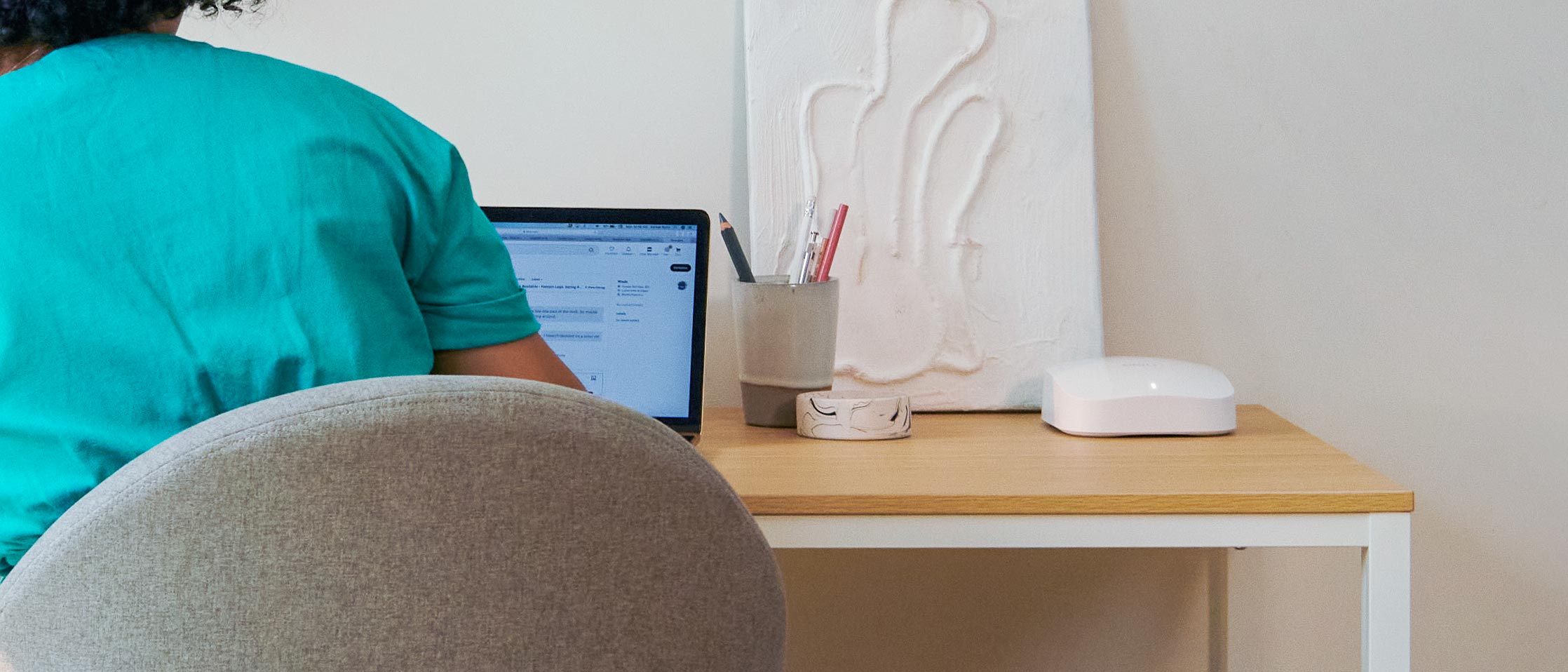Tom's Guide Verdict
It may not have the highest throughput, but the eero Pro 6 mesh kit does well at mid-range distances where others peter out, is quick to set up and automatically adjusts just about everything. It’s for those who want Wi-Fi 6 networking without the hassles.
Pros
- +
Great range
- +
Dynamic tri-band operation
- +
Easy fast setup
- +
Good performance at mid-range distances
Cons
- -
Devices have only two Ethernet ports
- -
Moderate throughput close up
- -
No USB ports
Why you can trust Tom's Guide
Wi-Fi Spec: AX4200
Number of Antennas/Removable: 7/No
Ports: Router and satellites– 2 Ethernet
Processor/Memory/Storage: Quad-core 1.4GHz/1GB/4GB
Wi-Fi chip: Qualcomm IPQ8174
Peak 802.11ax performance: 438.2Mbps (at 15 feet)
Range: 105-feet
Size: 5.3 x 5.3 x 1.9 inches
Estimated Annual Electricity Cost: $10.25 per unit or $30.75 for three devices
With one of the quickest and easiest setup routines in the world of mesh networking, the eero Pro 6 is the best mesh router for those who don’t care about getting top speed, every Wi-Fi 6 feature or customizing their network. The idea is that everything that has anything to do with data delivery with the eero Pro 6 is automatic, including its dynamic tri-band technology that continually balances the data flow.
While it’s throughput can’t compare with the best Wi-Fi 6 routers, the eero Pro 6 provides long range and surprisingly strong mid-range throughput. The eero Pro 6 is for those who are willing to trade customization options and top speed for a swift setup. In other words, it’s for those who want a low-maintenance wireless LAN that they can set and forget.
Eero Pro 6 review: Pricing and availability
The tri-band eero Pro 6 is available in packages that include a single unit for $229 that can fill a 2,000 square foot home with Wi-Fi, according to eero. There are also the eero Pro 6 two- and three-packs for $399 and $599 that can cover up to 3,500- and 6,000-square feet. The units are available on Amazon, eero’s corporate parent, as well as a variety of retail outlets. The pricing progression represents a small volume discount over buying them one at a time.
There’s also the dual-band eero 6, which limits its top speed to about 500Mbps and might make sense in a smaller home or one that is bandwidth-limited. Single units capable of filling a 1,500 square foot home go for $129, while two units that can work with a 3,000 square foot home cost $199. Finally, eero 6’s three pack sells for $279 and is good for up to 5,000 square feet. The eero 6 extender can fill in a Wi-Fi dead zone of up to 1,500 square feet and costs $89.
Eero Pro 6 review: Design
Produced and sold by Amazon, the eero Pro 6 owes a lot to its family DNA. Like its predecessors, the third generation eero products continue with the rounded white plastic rectangular design and a slightly angled top. The 5.3 x 5.2 x 1.9-inch eero Pro 6 devices are nearly twice the size of the last generation ones. Still, they’re tiny and more easily hidden compared to the Netgear Orbi RBK 752 or 852 models.
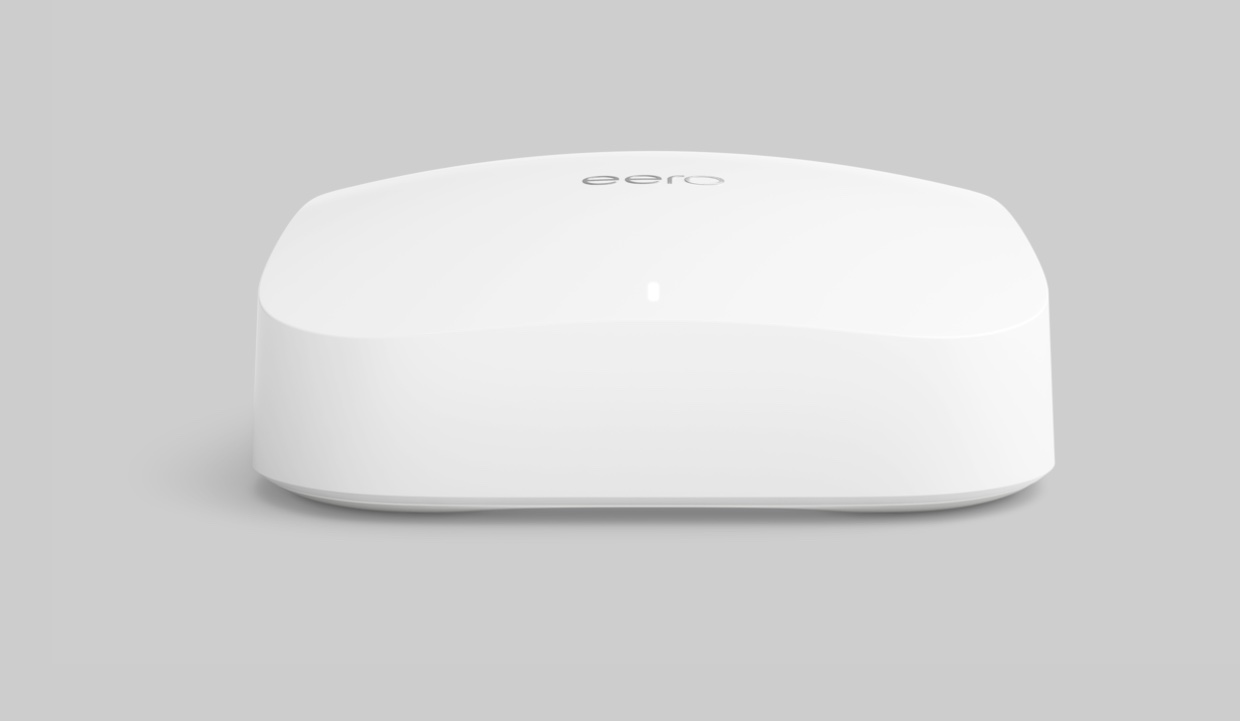
Underneath, the eero Pro 6 has a thick rubber base so as not to scratch your furniture and can easily be hidden thanks to the compact design. Without a way to mount it on a wall, several third parties sell brackets for wall installation or a rack that’s directly plugged into an AC outlet. The eero Genie is my favorite at $13.
The three-piece kit includes a trio of identical eero Pro 6 units. Unlike the Netgear Orbi router and satellites, the eero Pro 6 devices are configured as either host or satellite during setup. Forget about the units providing a Wi-Fi light show because each eero Pro 6 device has a single demure LED on top. It glows blue when it’s ready to be configured, white when it’s connected and red when it’s offline; it’s easy to turn them off.
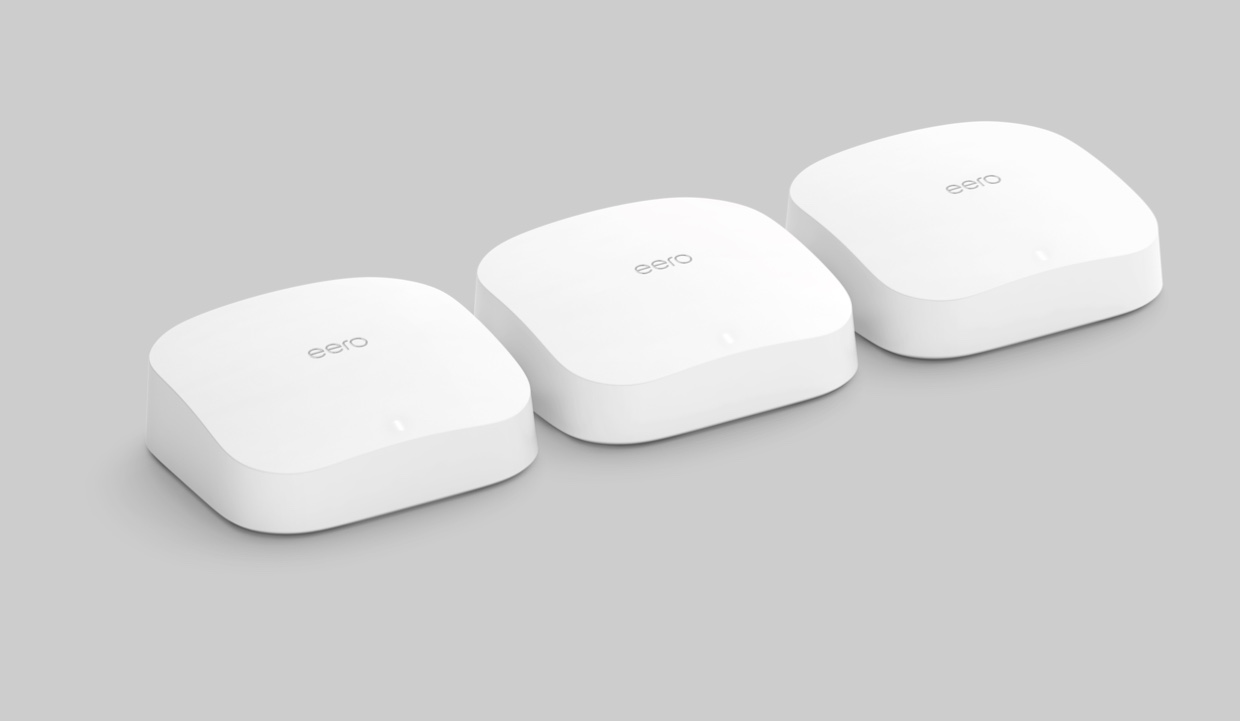
Each eero Pro 6 has internal antennas for Bluetooth (used during setup) and Zigbee (for connecting home automation devices) as well as five Wi-Fi antennas. Based on Qualcomm’s IPQ8174 Wi-Fi chip, the system has a 1.4GHz quad-core processor, 1GB of RAM and 4GB of flash storage for its settings and firmware. It includes MU-MIMO and beamforming technology to push the maximum amounts of data to the connected devices.
On top of its 2.4GHz data band, the system has two 5GHz bands that equally share in the movement of data to and from the network’s wireless satellites. Using eero’s Modulation Coding Scheme, the system dynamically optimizes and balances the flow of data to and from the host router. By contrast, Orbi reserves one of the 5GHz bands for communication from the satellite to the host, whether it’s needed or not. The eero Pro 6 system is theoretically capable of delivering 574Mbps over its 2.4GHz link as well as 1.2Gbps over one 5GHz connection and 2.4Gbps over the other 5GHz band. Altogether, the eero Pro 6 is capable of 4.2Gbps of throughput.
All this adds up to a lot of heat generated in a small space. Relying on passive cooling, each eero Pro 6 unit has limited ventilation and topped out at 124 degrees Fahrenheit, much hotter than others in its class.
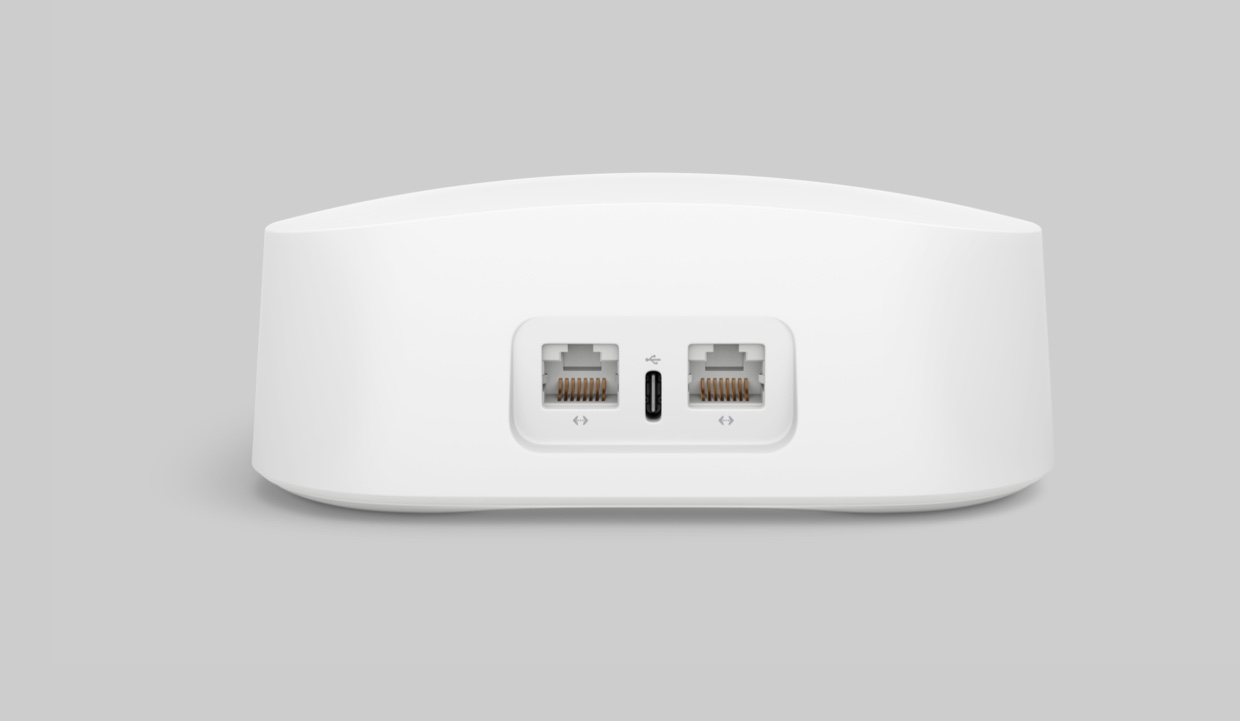
In the back is a rudimentary connection panel with two Ethernet connections. They’re both capable of moving 1Gbps of data, but the system lacks the ability to connect with Multi-Gig 2.5Gbps modems or perform port aggregation. It’s powered by a USB C power port but stick to using the included AC adapters or you’ll risk encountering a compatibility problem and seeing a blinking yellow warning light. It does without a USB data port for adding a hard drive to the network.
While the eero Pro 6 lacks a power switch, there is a reset button underneath. The company continues its long-held view that the Wi-Fi Protected Setup system is inherently insecure and doesn’t offer it.
In addition to the expected security attributes, the eero Pro 6 offers the Secure package. At $2.99 a month or $29.99 a year, it adds basics like content filtering, parental controls and ad blocking that others, like Asus, provide for free. It includes frequent reports on who’s doing what online as well as VIP support. By contrast, the Secure + plan costs $9.99 a month or $99 a year and adds the 1Password password manager, Encrypt.me virtual private network and Malwarebytes antivirus software. It adds up to a $145 a year value and is similar to the annual charges for Orbi’s Armor security software.
The eero Pro 6 has a home automation ace up its sleeve that will appeal to those who want to use online thermostats, lights and locks. It has a full 802.15.4 smart home hub built in and works with Alexa voice control. In other words, the eero Pro 6 can consolidate all this gear.
Eero Pro 6 review: Performance
Using Ixia’s IxChariot networking benchmark software, we created a busy Wi-Fi network in my 100-year old 3,500-square-foot home. With 10 simulated data-hungry clients, the eero Pro 6 was a disappointing performer up close, delivering only 436.1Mbps to a Dell XPS 15 system 15-feet away. This is not only slightly more than Wi-Fi 5 mesh kits could deliver but was well off the pace set by the Netgear Orbi RBR850 (833.6Mbps), the Linksys Velop AX4200 (507.7Mbps) and the Orbi RBR750 (506.7Mbps).
With the router and the test system 50-feet apart, the eero Pro 6’s bandwidth caught up with the others at 239.9Mbps, surpassing the Linksys Velop AX4200 (201.3Mbps), the Netgear Orbi RBR850 (124.4Mbps) and the Orbi RBK752 (100.3Mbps). Meanwhile, at 75-feet, the eero Pro 6 retained the lead at 208.9Mbps, while the Linksys Velop AX4200 moved 139.6Mbps and the Netgear Orbi RBR850 and RBR750 fell behind at 85.9Mbps and 82.5Mbps, respectively.

Happily, the eero pro 6 stayed online at 90-feet with 29.5Mbps of throughput available for the test system; the others were offline at this distance. The eero Pro 6 had a range of 105-feet, as much as 20 feet farther than other Wi-Fi 6 mesh kits.
It was a mixed bag when it came to pushing a strong data signal throughout my old house. In fact, it was able to move 430.9Mbps upstairs to a system directly above the router. This is roughly the same as the Linksys Velop AX4200 (437.5Mbps), but off the pace set by the Netgear Orbi RBR850 (670.1Mbps).
With the receiving system set up 25-feet and a wall away from the eero Pro 6 router, it was able to get 375.6Mbps, about half that of the Netgear Orbi RBR850 (782.9Mbps). Still, it was between the Linksys Velop AX4200 (525.7Mbps) and the Netgear Orbi RBR750 (326.6Mbps).
With a single satellite unit set up 50-feet from the eero Pro 6 router on the same floor, the network delivered 142.3Mbps to the test system positioned another 40-feet away. This was less than the 161.1Mbps that the Linksys Velop AX4200 managed but well ahead of the Netgear Orbi RBK752 (87.7Mbps) and the RBK852 (39.1Mbps).
In another real-world arrangement, we placed the satellite upstairs from the host router and set the test system up 40-feet away at the top of a flight of stairs. The system was able to grab 189.3Mbps of data. That’s the lowest throughput of the class of Wi-Fi 6 mesh kits and well behind the Netgear Orbi RBK852 (405.5Mbps), Linksys Velop AX4200 (329.2Mbps) and the Netgear Orbi RBK752 (209.4Mbps).
On the other hand, a three-piece eero Pro 6 network with one satellite set up a floor above the router and the other a floor below did remarkably well. With the test system set up 40-feet away, it received 190.2Mbps. That’s 45 percent less than the 276.5Mbps that the Linksys Velop AX4200 delivered. Still, it was enough to fill the home with Wi-Fi.
I used the eero Pro 6 for a week of daily use for emails, video bingeing, listening to music and downloading files. It held up well to this use and passed our saturation test. While I watched YouTube video on a Macbook Air, a ThinkPad T470 played Spotify music and an iPad Pro streamed an Internet radio station. As this was going on, an HP Elite Dragonfly notebook copied and saved data on a network-attached RAID storage system. During the test, there were no audio or video skips, freezes or artifacts.
Each of the three eero Pro 6 units used 9.0 watts of power, which adds up to $10.25 each if they’re always on and you pay the national average of 13 cents per kilowatt hour of electricity. All three devices together would cost roughly $30.75 a year to operate. That’s about the same on a per unit basis as the Netgear Orbi RBK752 with only two devices.
Eero Pro 6 review: Setup
As has been the case with the first two generations of eero hardware, the emphasis is on making eero Pro 6’s setup procedure as quick, easy and painless as possible. Getting the Pro 6 online started with downloading and installing the eero Home WiFi System app. There are versions for iOS and Android, which I used with my Samsung Galaxy Tab S7 tablet. Unfortunately, there’s no way to use a connected Web browser to set the eero system up.
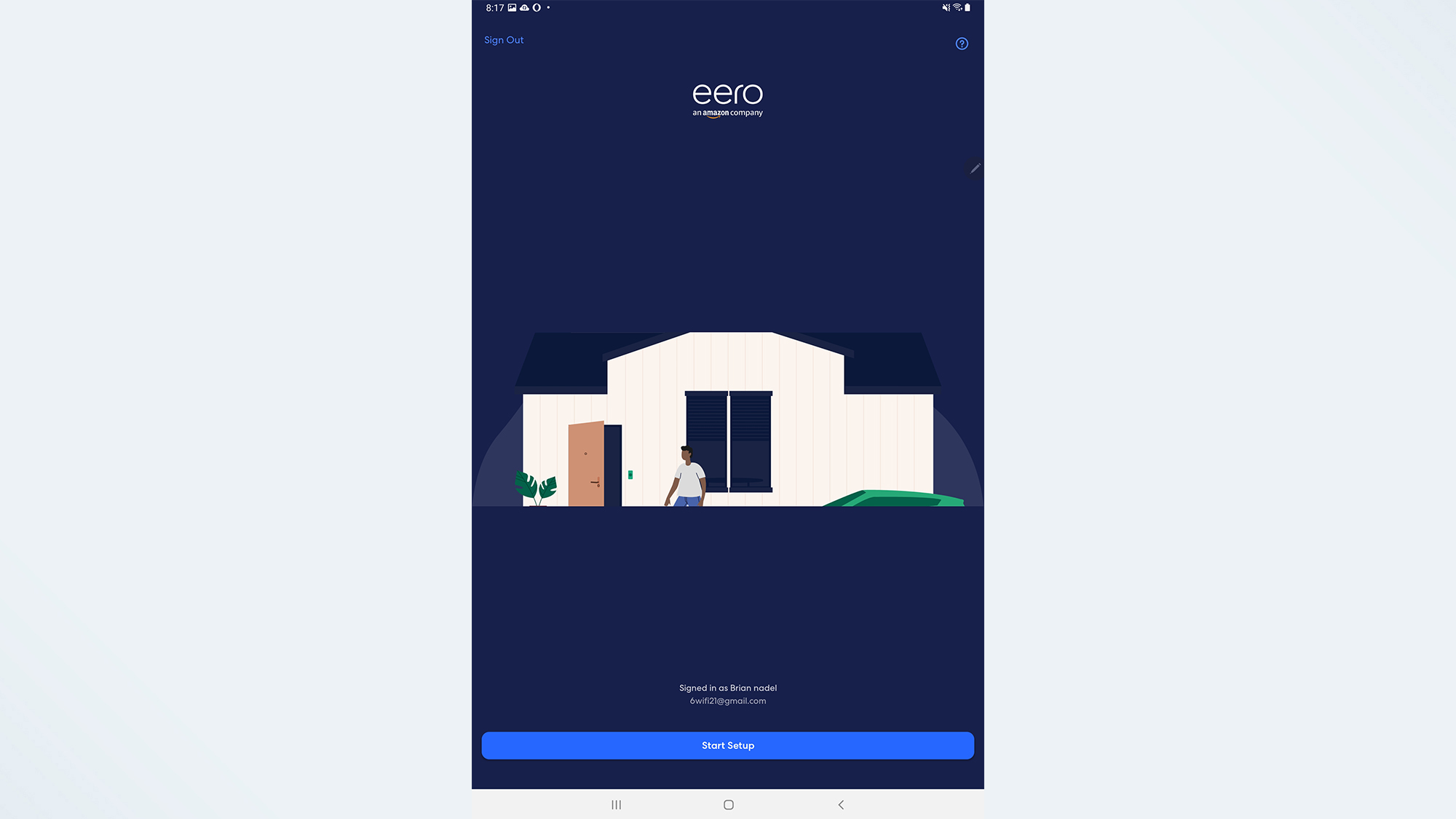
After opening the eero box, I picked one of the three devices at random and followed the app’s illustrated directions for setting up the router. I created an account with eero that required a phone number. I needed to respond to a verification text to get the installation process going.
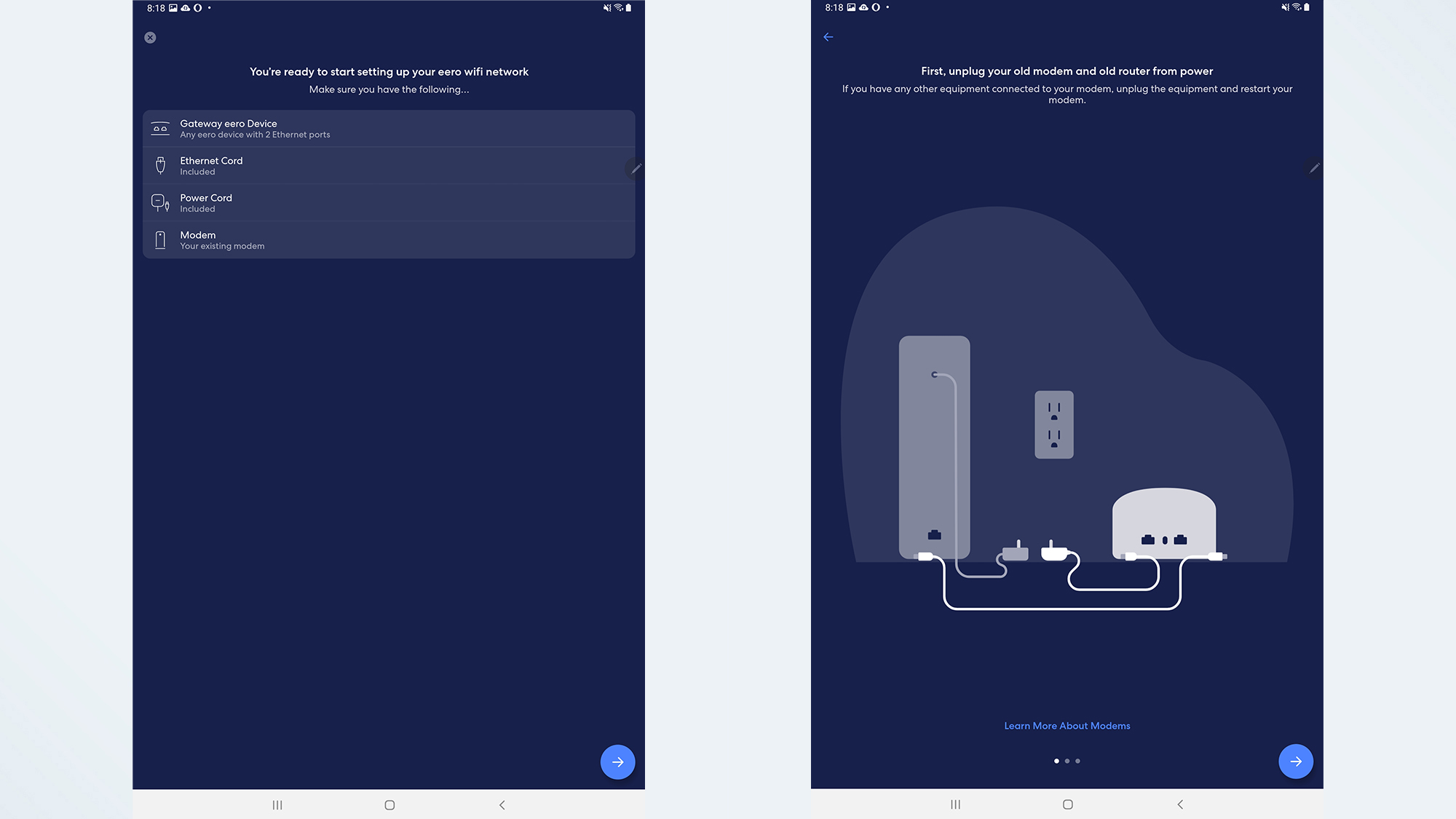
Next, I plugged everything in and allowed the eero app to use my tablet’s location. Finally, the tablet started scanning for eero hardware using the device’s Bluetooth radio. At this point the unit’s LED is solid blue, showing it’s ready for a connection.

Within 20 seconds, the eero device was found. If you have trouble with this part, an alternate approach is to enter the unit’s serial number and take it from there.
Next, I needed to fill in what room the router was located and added a new network name and password.
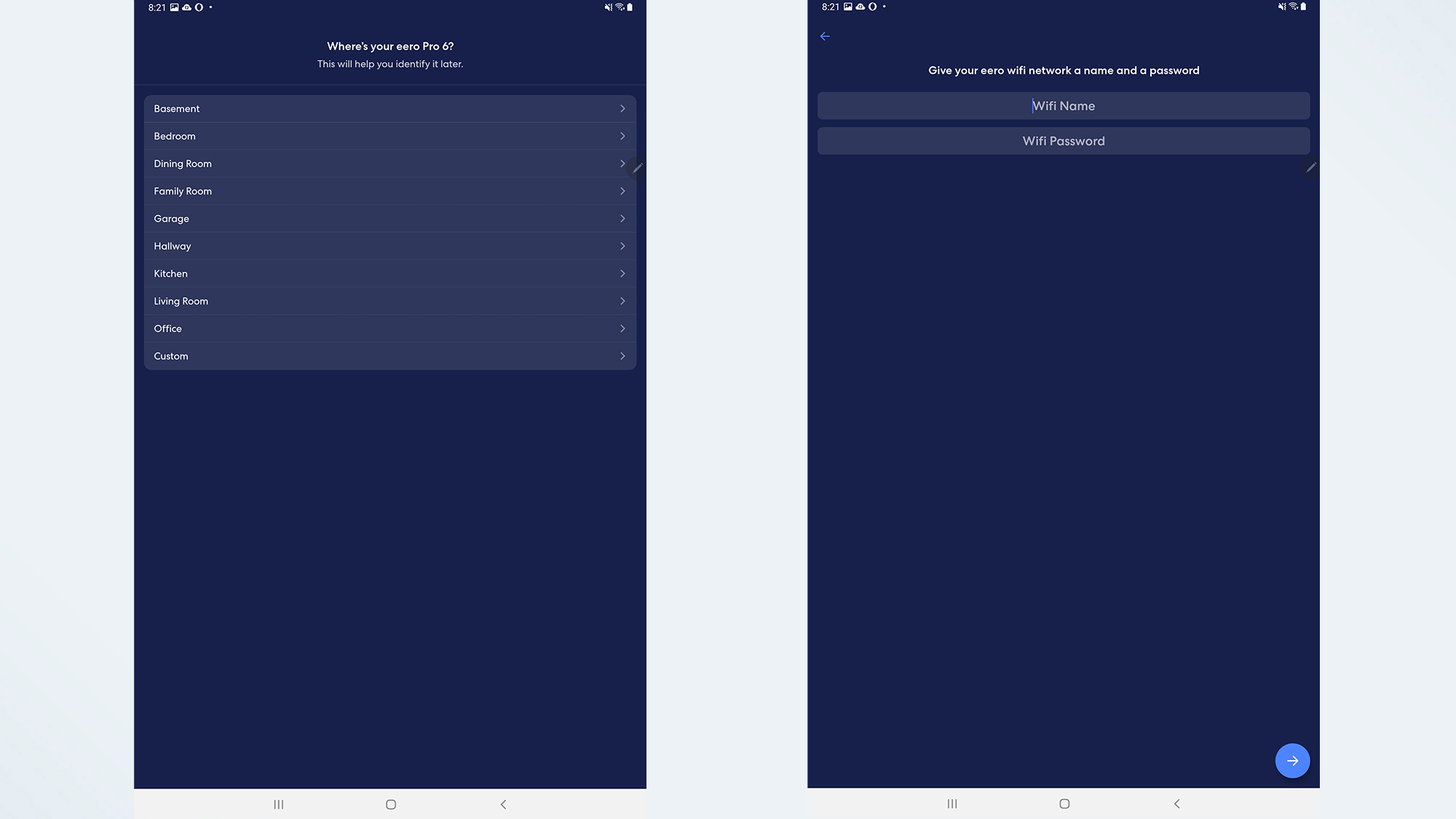
The system incorporated the new settings, optimized the data flow and did a restart. When the unit’s LED glowed white, it was ready and connected. Start to finish, it took only 5 minutes and 30 seconds to set up the router.

Adding eero Pro 6 satellites is even easier. I plugged in the second eero Pro 6 unit about 50 feet from the host and tapped the app’s “Add another eero Device”.
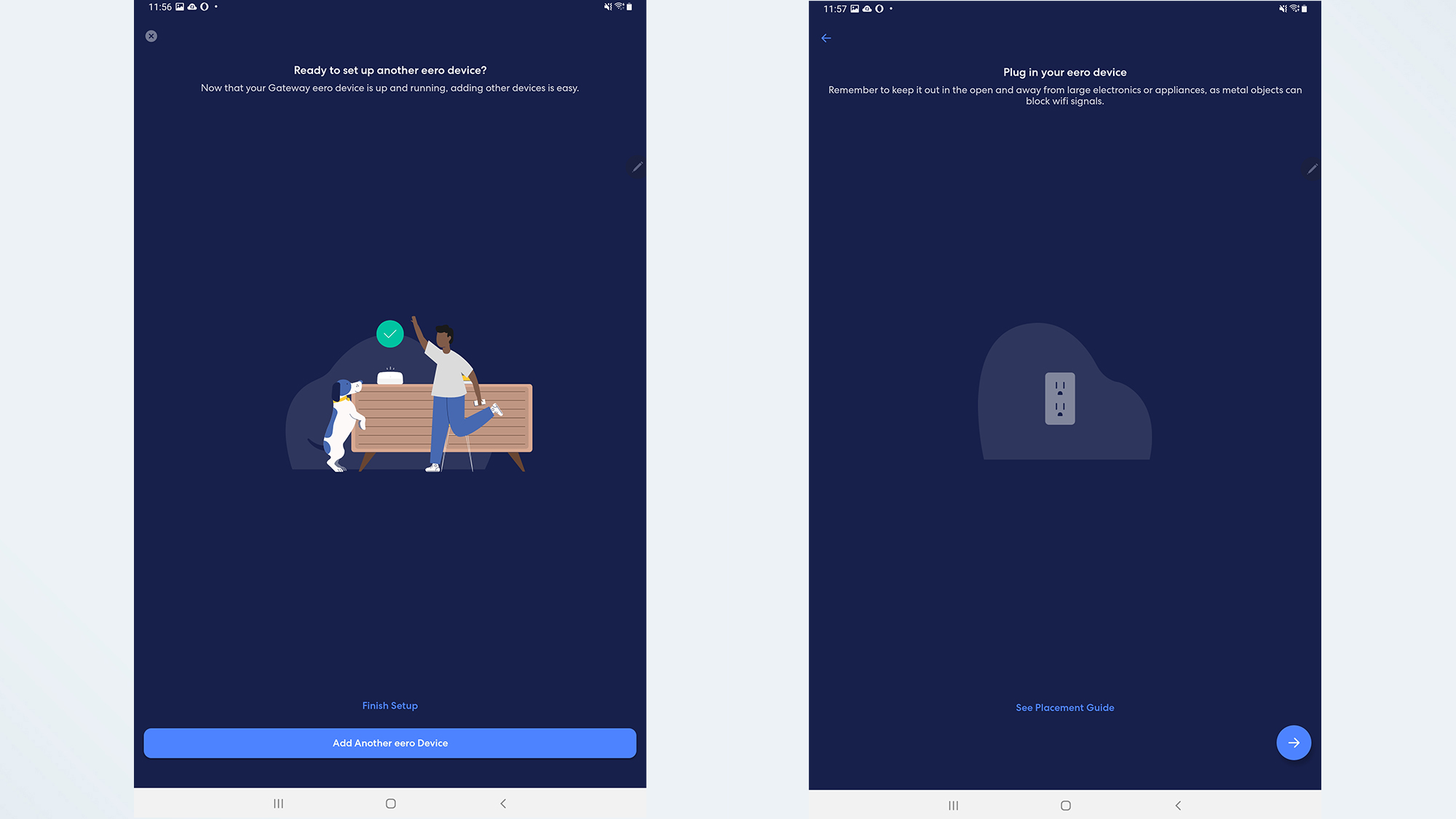
The app scanned for the device and found it in about 15 seconds. The software then optimized the data flow.

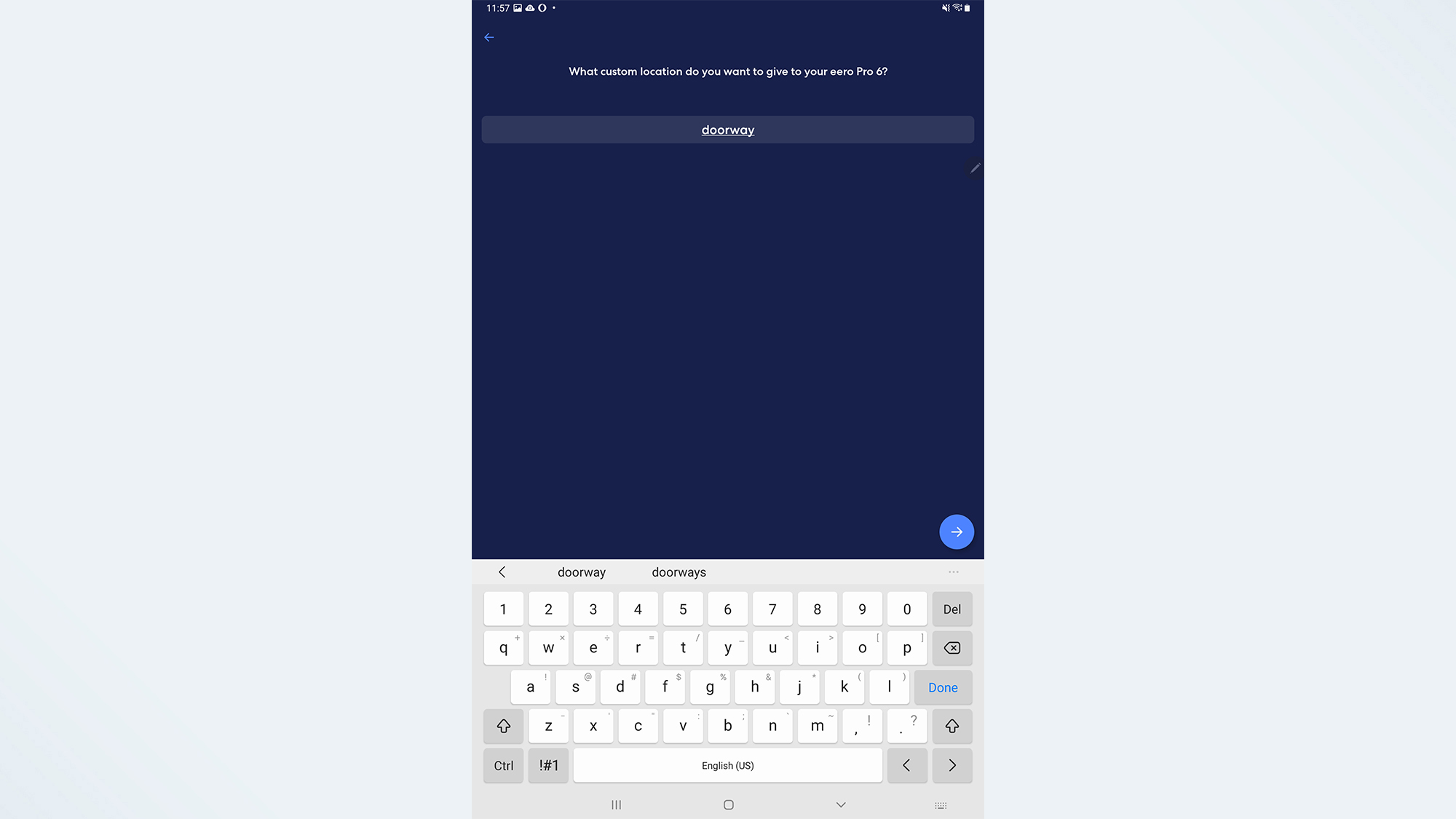
Finally, I needed to give a name to its location. I repeated this to get the second node connected. It took all of 11 minutes to put together eero Pro 6’s three-piece mesh network. It was enough to fill my entire 3,500 square foot home with Wi-Fi.
eero Plus subscribers can take advantage of an eero Internet backup feature that gets your network back online quickly after an outage. Here's an overview of how to set up eero Internet backup on your eero Pro 6.
Eero Pro 6 review: Configuration
The only way to configure and customize the eero Pro 6 set is via the eero app. Its Home page has a lot: online status, a list of connected devices as well as whether the host and nodes are connected. There’re alerts for getting new firmware and adding home automation devices. Along the bottom is a menu for Home, Activity and Discover (for IOT devices). The Settings section includes the ability to work with the Guest network and use the interface’s beta Dark mode.
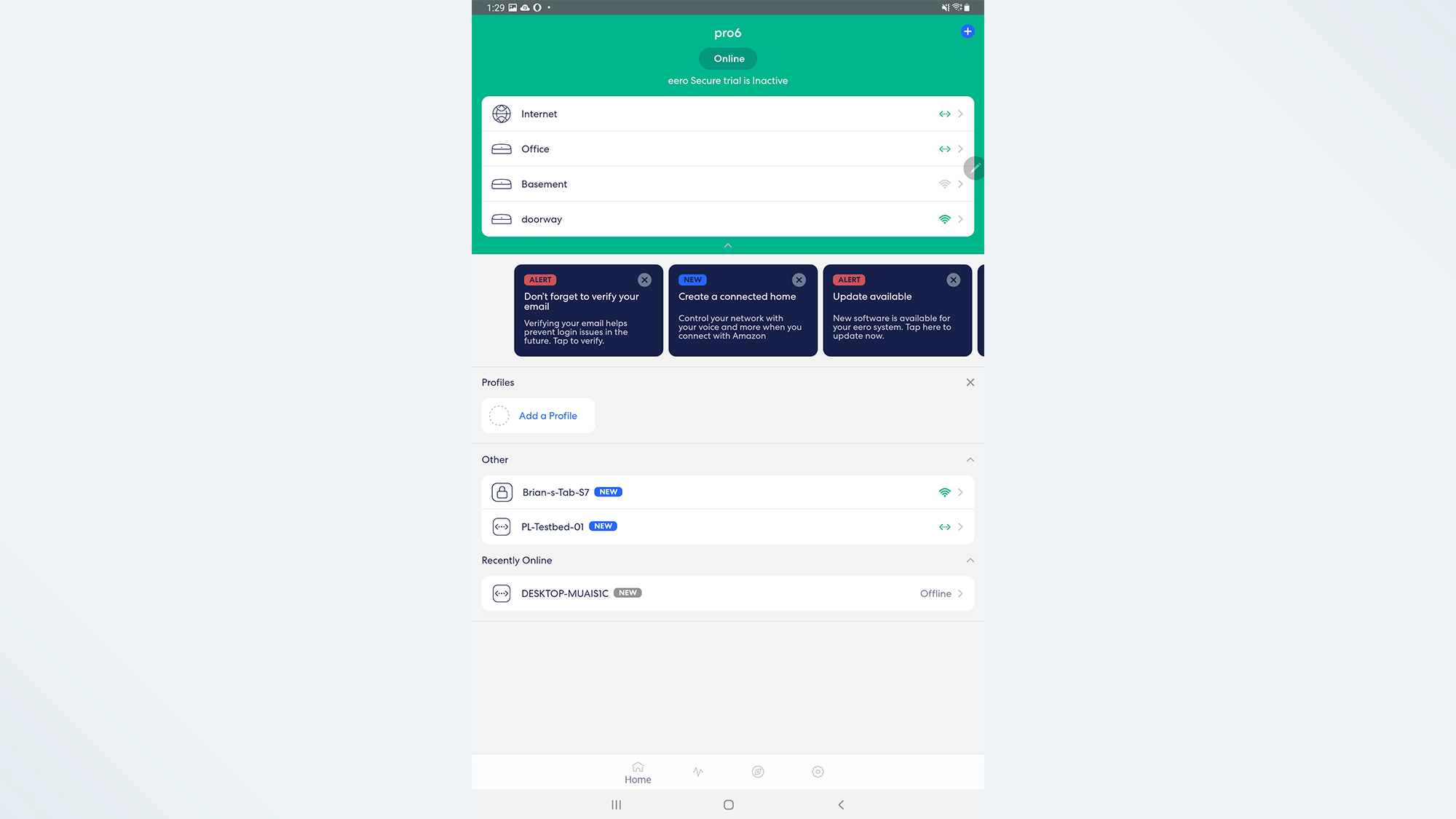
Want more info? Click on any to get details, like IP address and LED light status (and an opportunity to turn it off) for placement in a bedroom, for instance. Tap Advanced for things like the device’s model and serial number and a series of MAC addresses that most should never need to know. There’s a place to restart or remove the device from the network.
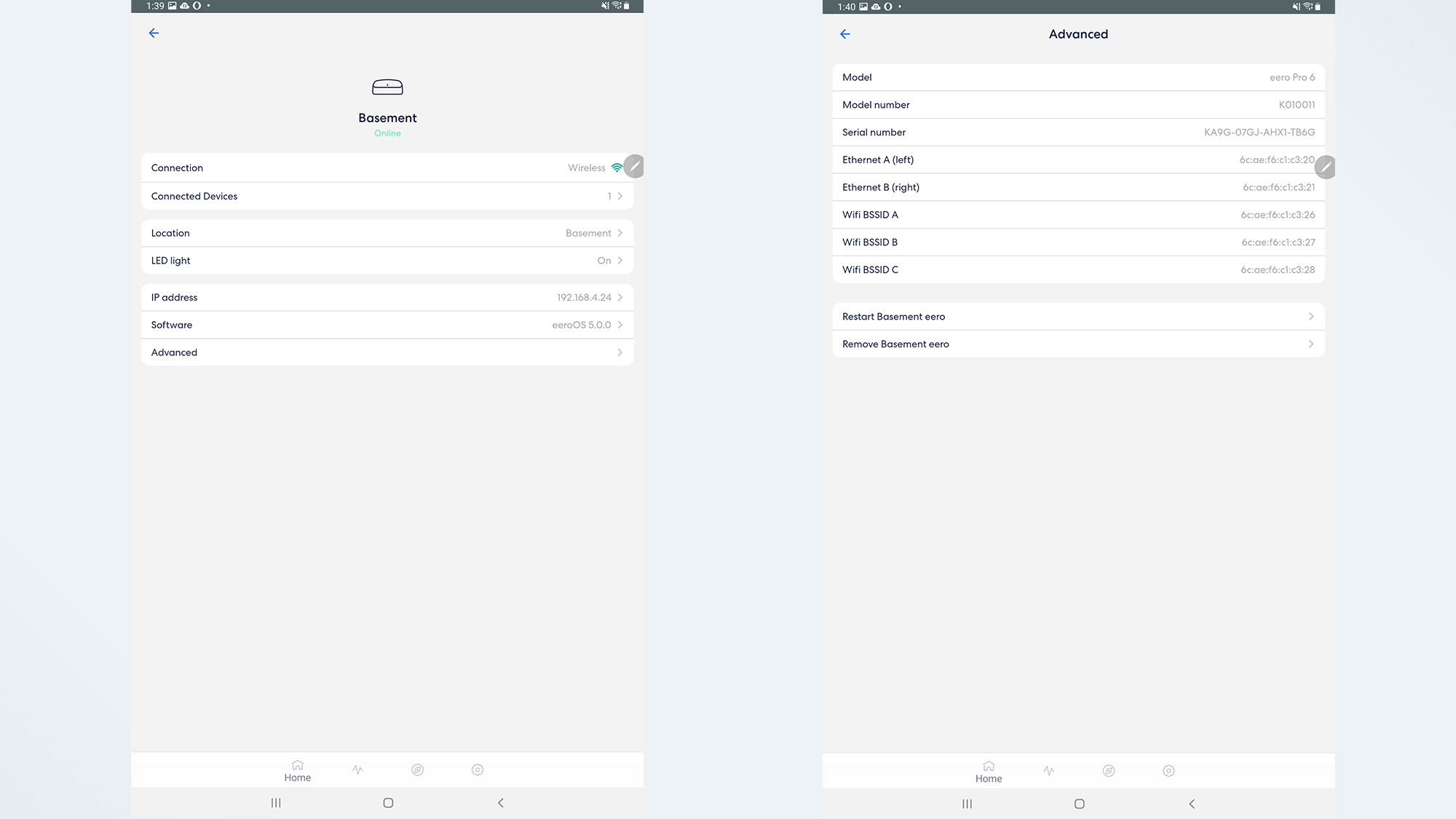
The Pro 6 can be set to send usage data weekly to an email account as well as update the software. It can alert you as to new devices entering the network. But that’s about all, with the devices lacking the ability to do things we take for granted with Wi-Fi 6 – from using ultra-wide 160MHz data channels and picking the channels to giving the 2.4- and pair of 5GHz networks different names and passwords. Still, the automatic channel selection finds the least congested data portal on its own, making this the mesh kit for those who don’t know or care about the intimate set up details.
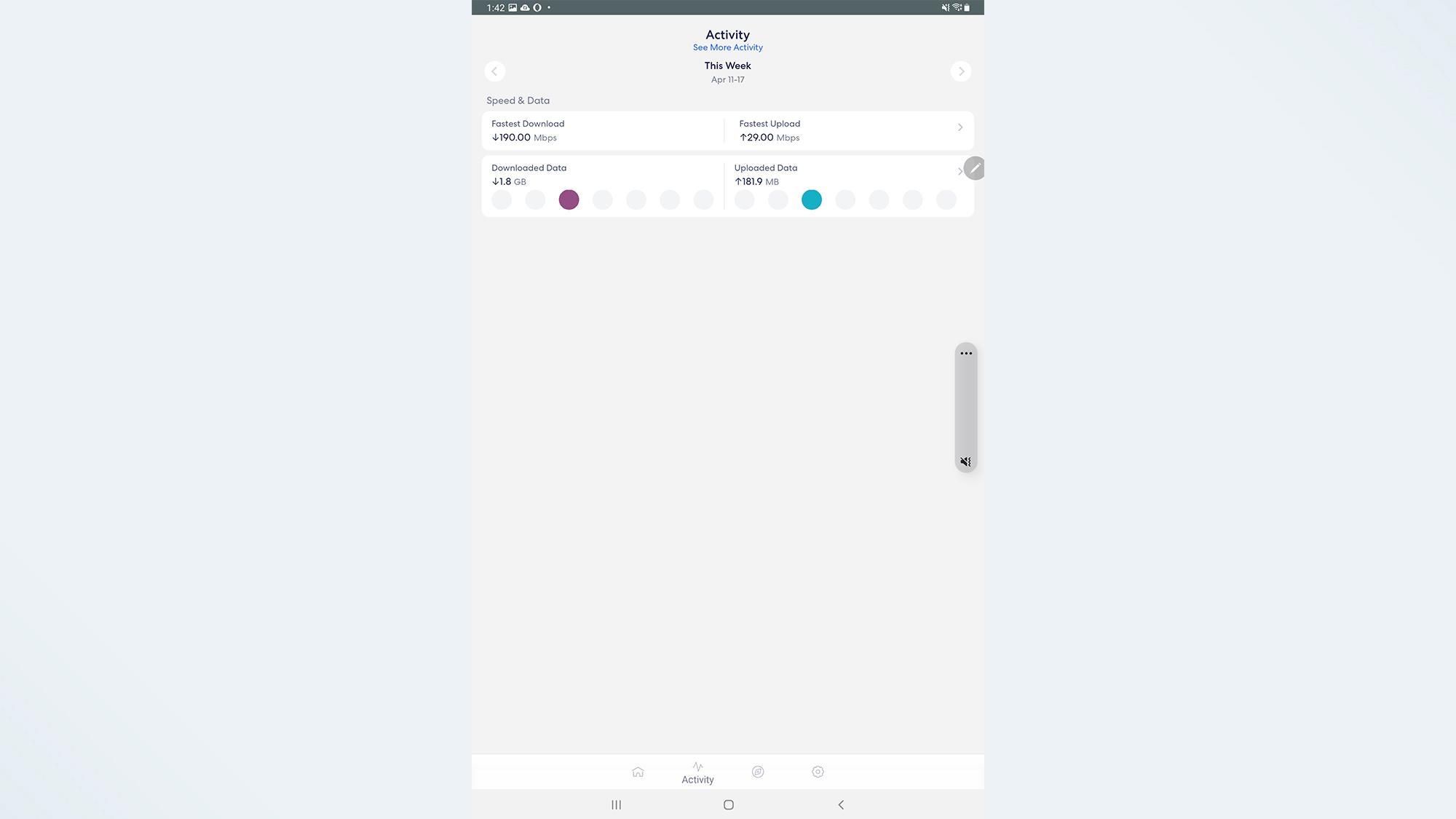
On the other hand, if you have Ethernet cabling in your home, the satellites can be used as wired access points with eero’s optimization. There’s a nice troubleshooting section for when things don’t go well that uses plain English, like “My Internet Connection Drops”.
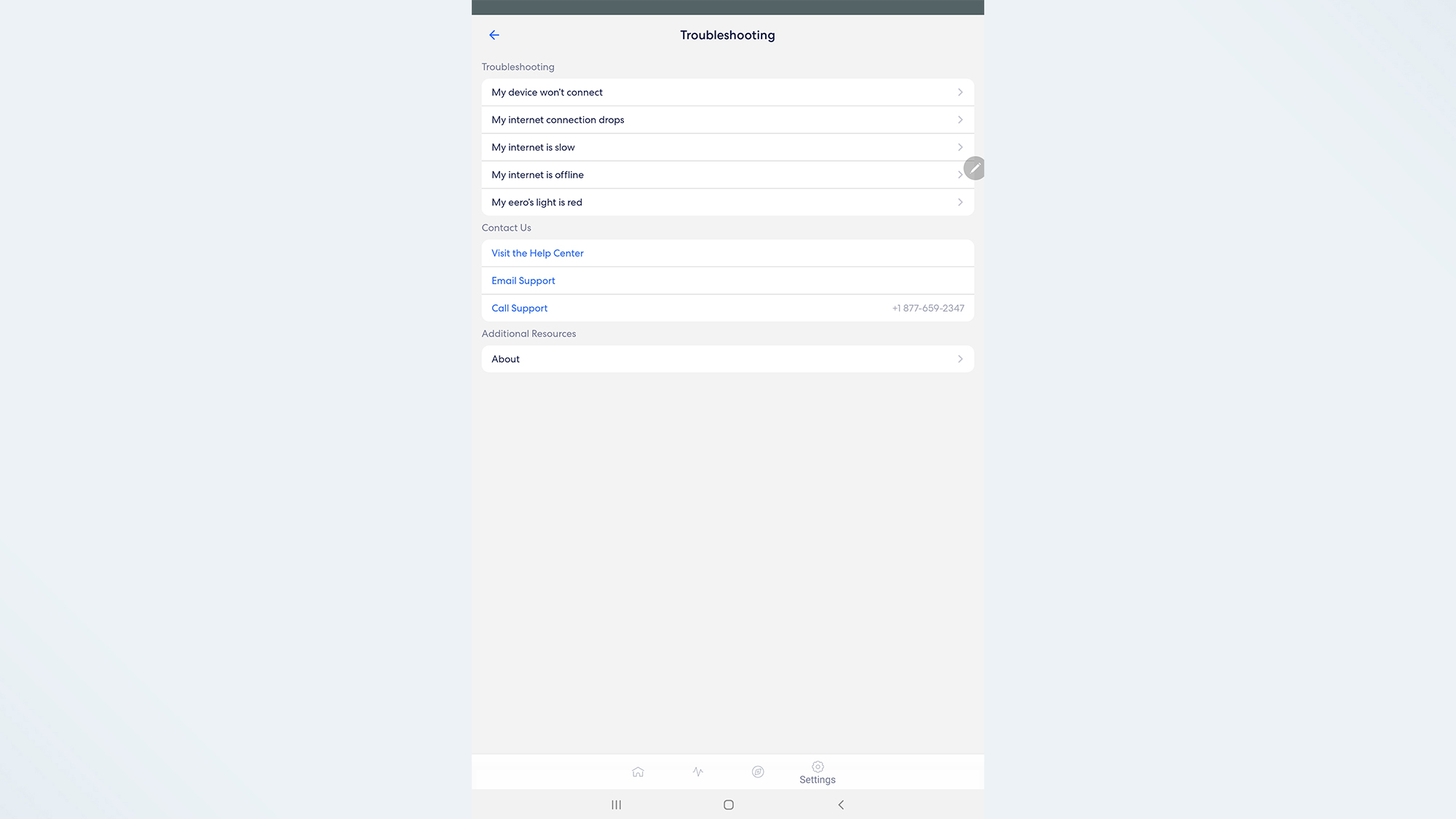
In addition to eero’s Smart Queue Management software that apportions bandwidth to the devices that need it most, the eero Pro 6 app has three beta programs: Band Steering (to get devices to use the faster 5GHz band), Local DNS Caching (that can speed up page loading by keeping frequently used addresses handy) and WPA3 (for extra security). Others have already incorporated these items into their operations.
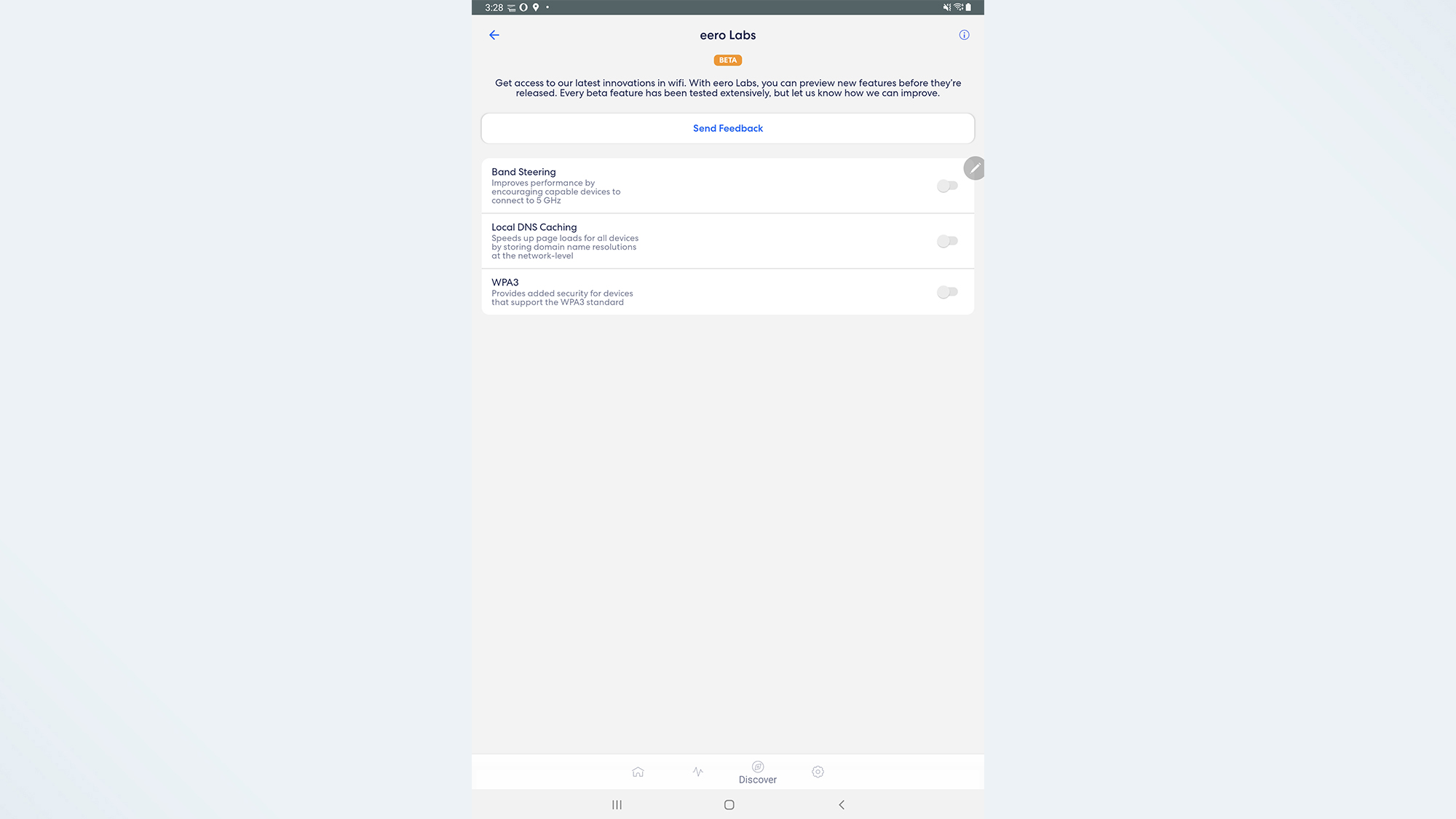
Happily, at the bottom of the page are places to email eero’s support staff and the help desk’s phone number. I wish every router maker would do this.
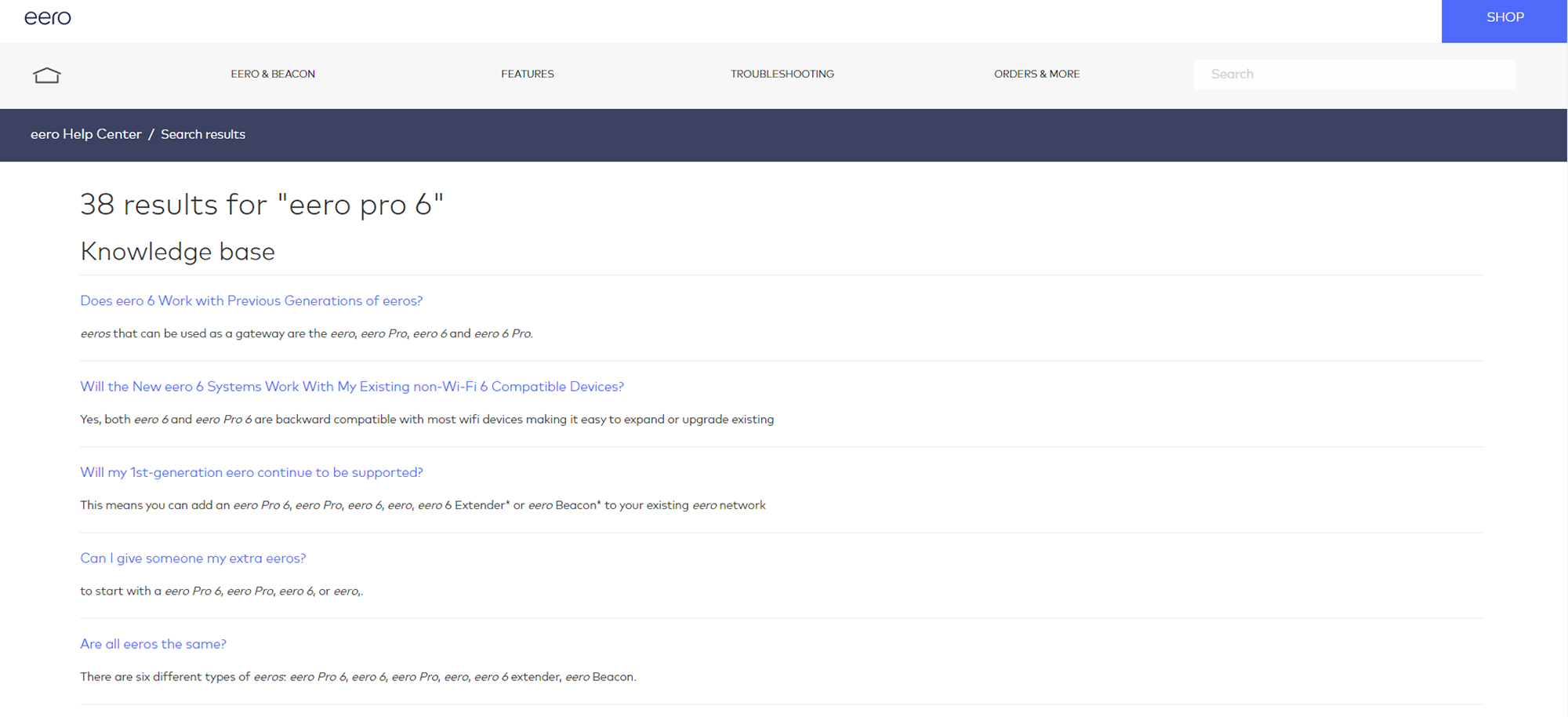
Like many competitors, eero warranties the Pro 6 set for a year. This includes full support and service. While better than Netgear’s 90 days of support for its Orbi line of mesh products, it pales next to the three-years of warranty and support from Linskys. The support site has lots of self-serve items, from articles to set up help to lots of practical info about the inner workings of eero gear.
Eero Pro 6: Verdict
The eero Pro 6 is for the impatient among us. With it taking only about 11 minutes to create a three-piece mesh network, it continues to have one of the quickest, easiest and least frustrating set up procedures. Those who get and install an eero Pro 6 mesh network will be rewarded with excellent mid-range speeds and a long range of 105-feet that uses an innovative dynamic balancing system to streamline the network’s data flow. On the downside, the eero Pro 6 set lacks the high-speed of its competitors up close and really comes into its own at mid-range distances where the performance of others lag. It has only two Ethernet ports available for connecting a storage device or a wired computer and lacks any USB data ports.
At $599 for three units, the eero Pro 6 is moderately priced but more expensive than the Linksys Velop AX4200 mesh kit. All told, the eero Pro 6 is a great mesh kit for those who want to enjoy Wi-Fi data without fiddling with settings.
Brian Nadel is a freelance writer and editor who specializes in technology reporting and reviewing. He works out of the suburban New York City area and has covered topics from nuclear power plants and Wi-Fi routers to cars and tablets. The former editor-in-chief of Mobile Computing and Communications, Nadel is the recipient of the TransPacific Writing Award.
